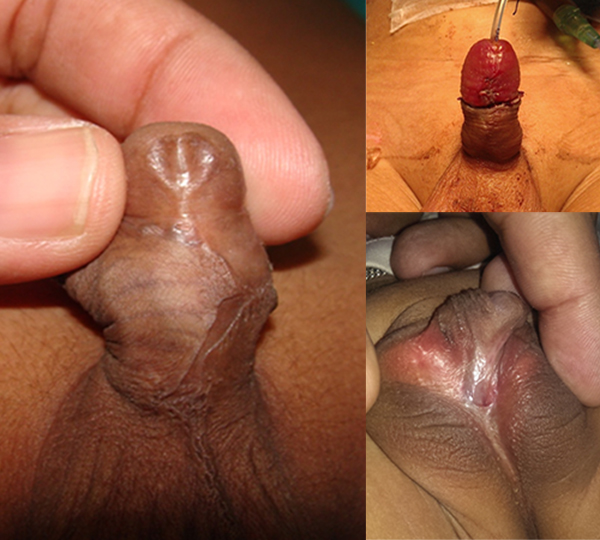
What is hypospadias and what causes it?
Hypospadias is a congenital (present at birth) problem affecting a boy's penis. It is a combination of three separate problems: the hole through which urine passes (meatus) is not at the tip of the penis, the foreskin is gathered at the back of the penis with none at the front and the penis may be bent when stiff. The position of the meatus varies; in some boys, the hole is only a small distance away from the tip of the penis, whereas in others, it is at the base of the penis, in the scrotum or behind the scrotum.
How is hypospadias diagnosed?
Hypospadias is usually diagnosed by clinical evaluation of the appearance of the penis and the symptoms reported by the parents. Most boys are assessed when a few months' old, so that treatment can be planned for when the child is between six months and a year old. It is important that circumcision does not take place, as the foreskin is needed during the operation.
How is hypospadias treated?
Although hypospadias does not cause any immediate problems and is not life threatening, it means that peeing standing up may not be possible, and later on, having an adequate erection and having sex may be difficult.
The aim of the operation is to straighten the penis, move the meatus to the tip of the penis and to carry out a circumcision by removing the excess foreskin. By doing this, the penis will also look more normal.
Usually, the surgeon is able to make these corrections in one operation, but if the hypospadias is severe, he may decide to correct it in two stages, in separate operations.
What does the operation involve?
The operation is carried out under a general anaesthetic and lasts between one and three hours, depending on the severity of the hypospadias.
The surgeon uses the skin on the penis to create a tube, which extends the length of the urethra so that a new hole can be created at the tip of the penis.
Sometimes there is not enough skin on the penis for the surgeon to create the urethra. In such cases, an initial operation to add extra skin to the penis using a skin graft would be needed. After at least six months, the second operation would be carried out as above.
Are there any risks?
All surgery carries a small risk of bleeding during or after the operation. There is also a small risk of infection, but your child may be given antibiotics as a precaution.
Every anaesthetic carries a risk of complications, but this is very small. Your child's anaesthetist is an experienced doctor who is trained to deal with any complications. After an anaesthetic some children may feel sick and vomit. They may have a headache, sore throat or feel dizzy. These side effects are usually shortlived and not severe.
For about 2-3 in 10 boys, the original hole opens up again, so that your son passes urine through two holes. This can happen at any point after the operation, and will need to be fixed in an operation. Occasionally, the new hole at the tip of the penis is too small, so your son will need another operation to make the hole larger. Rarely there is complete disruption of all the sutures taken to create new tube or sometimes newly created tube becomes narrow, In these situations reoperation is required.
What happens after the operation?
Your child will recover from the anaesthetic and operation on the ward and will be able to eat and drink soon afterwards, if he feels like it.
When he comes back from the operating theatre, there will be a thin, plastic tube (catheter) draining urine from your child's bladder and a large dressing covering the penis; these will both need to stay in place for one week. The drainage tube can irritate the inside of the bladder, causing bladder spasm, but we will give your child some medicine to reduce this as well as pain relief medicine. Bladder spasms can show up as tummy pain or discomfort in the penis or bottom area. Constipation can make the spasms worse, so make sure that your child is eating a balanced diet and drinking plenty of fluids when you are back home.
When you get home
It is quite normal for your child to feel uncomfortable for a day or two after the operation. Usually paracetamol will be enough to relieve any pain if you give it every four to six hours for the next day. You do not need to wake your child during the night to give the medicine.
As there is a small risk of infection, your child is likely to need a course of antibiotics for a week after the operation.
What happens next?
You will need to come back to the hospital a week after the operation so that the dressing and drainage tube can be removed. This can be uncomfortable, so on the morning you are coming in to have the dressing removed, give your son the maximum amount of pain relief.
When the dressing has been removed, the penis will look red and swollen; this is normal and it will settle down within a few days.

